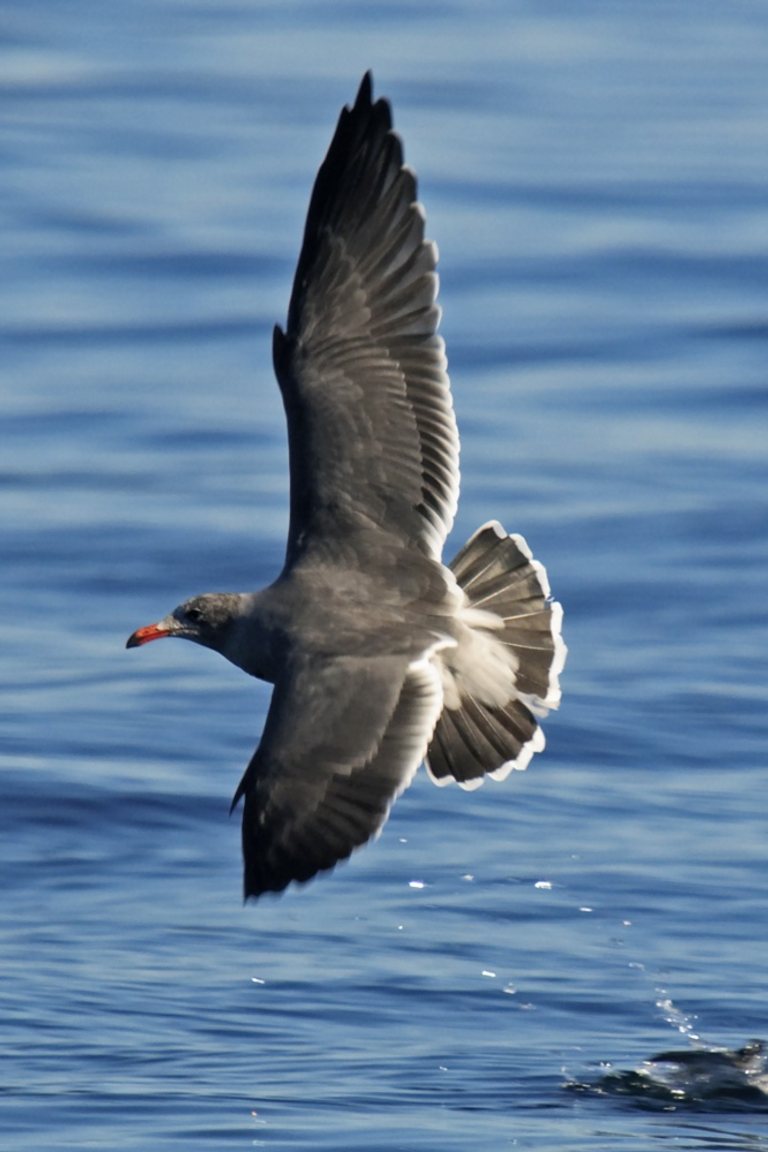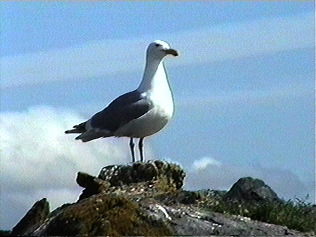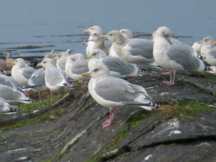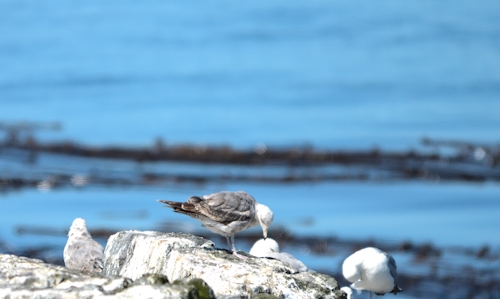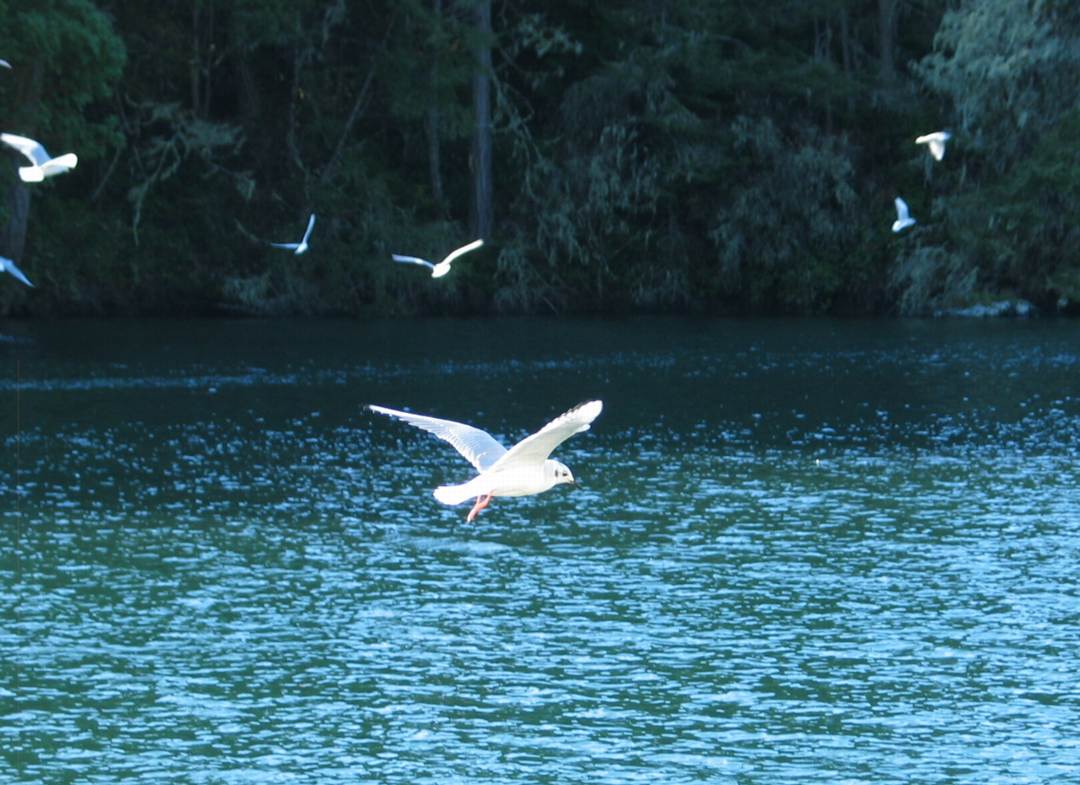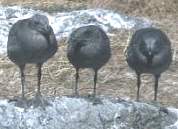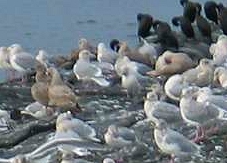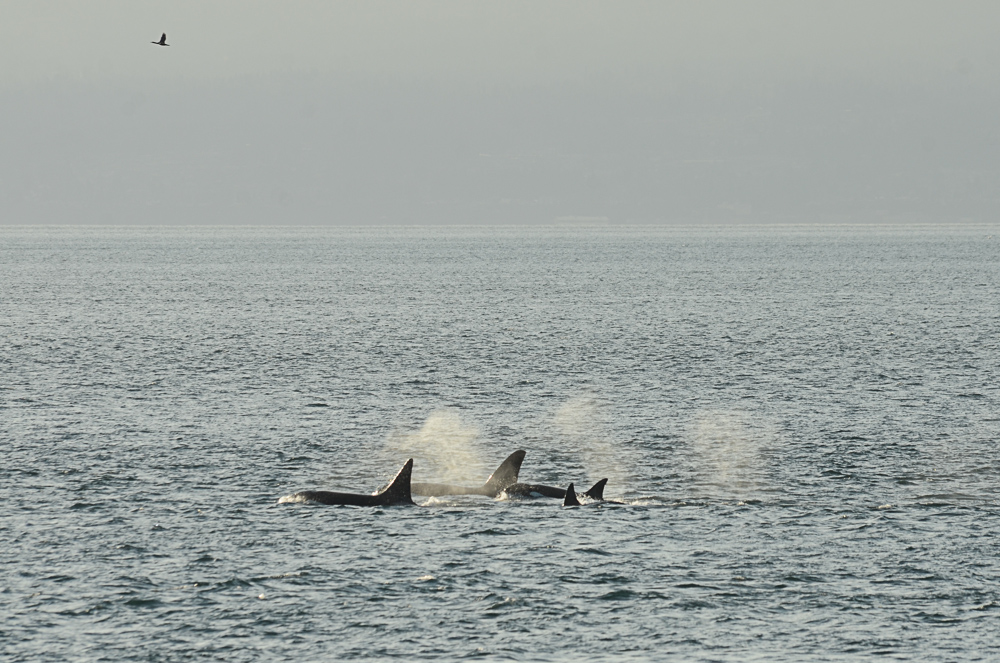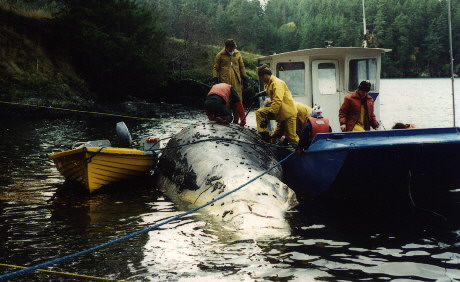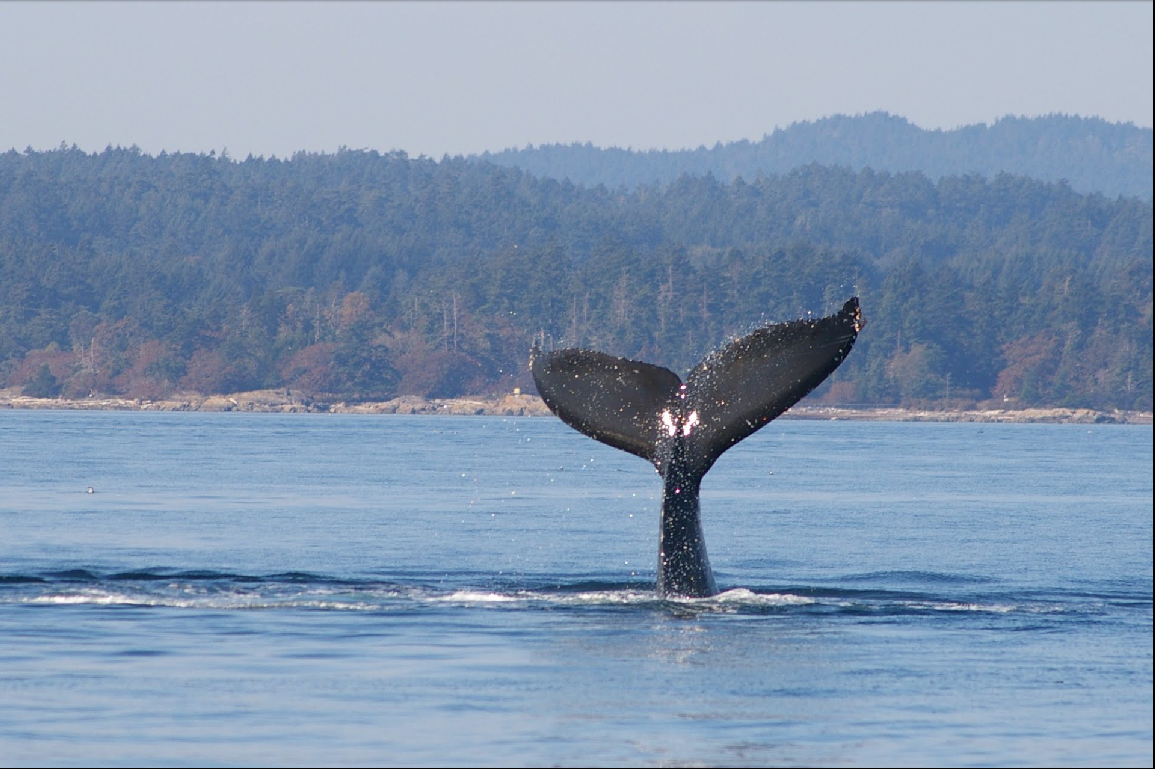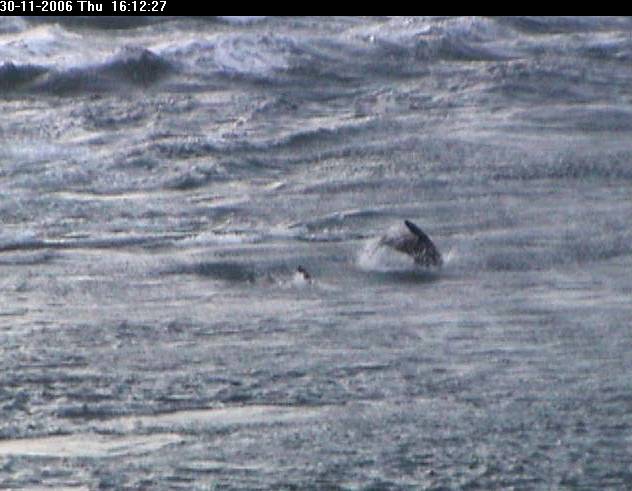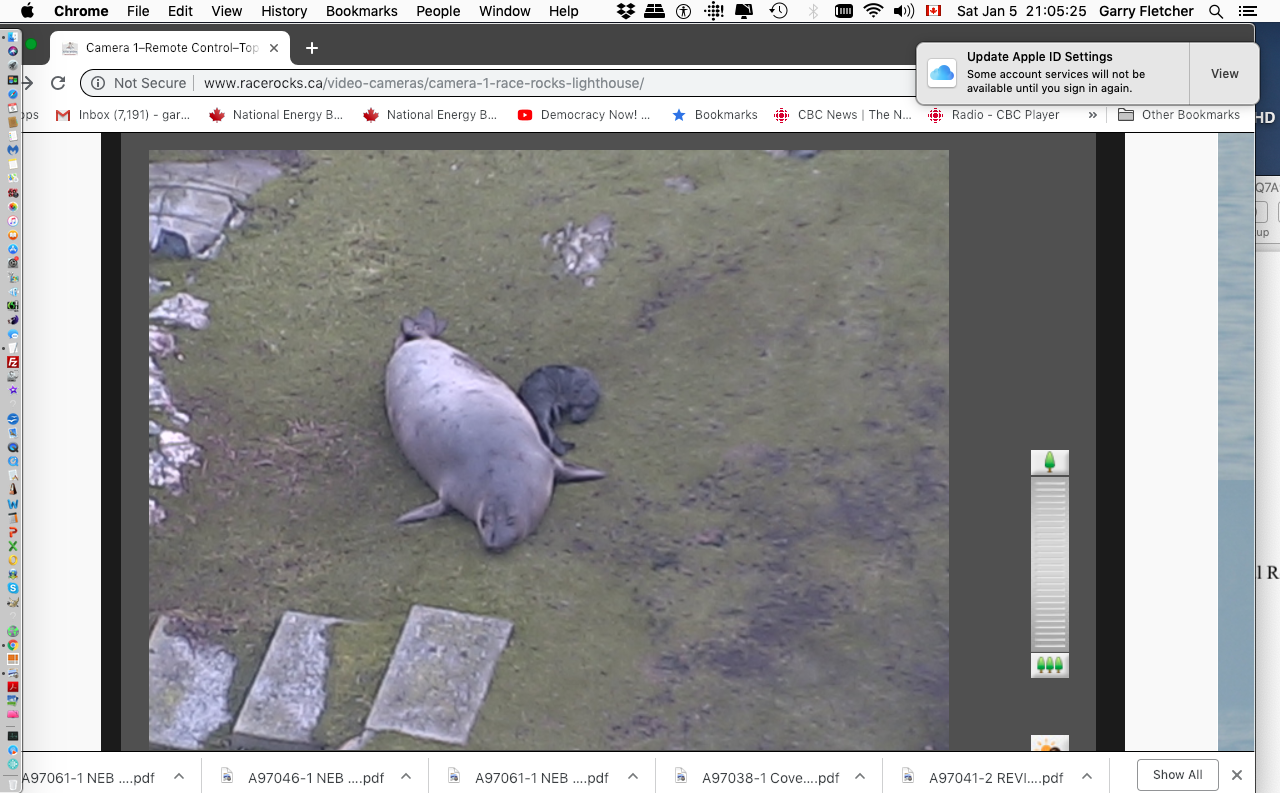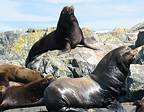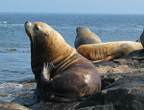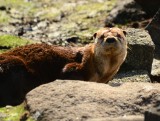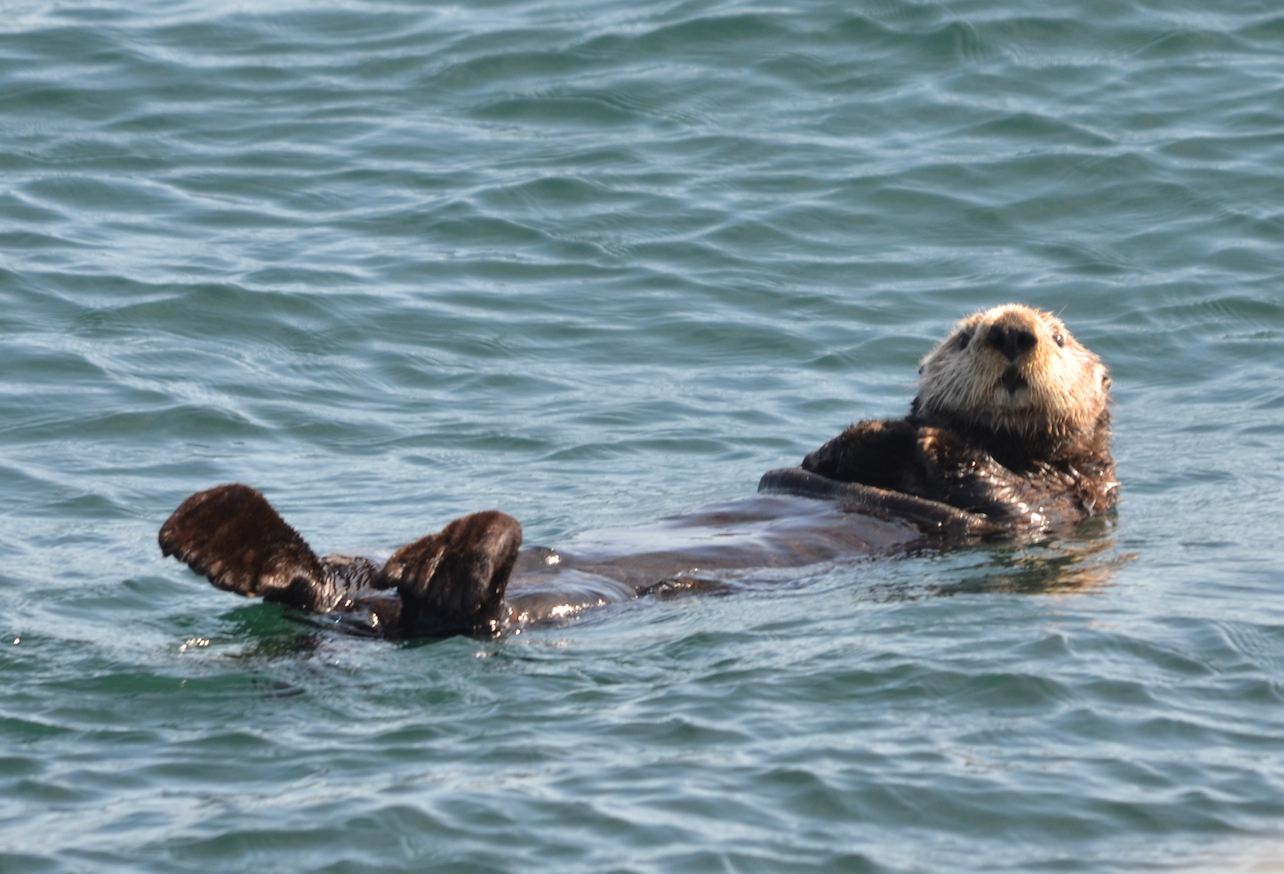| 11a |
Predominantly black, long-necked bird:one of the 3 cormorant species |
12 |
| 11b |
Birds other than gulls or cormorants: otherwise, all other shorebirds and land birds on Race Rocks. |
14 |
| 12a |
Pale or yellow coloured face – present only during winter months |
| Double-crested cormorant |
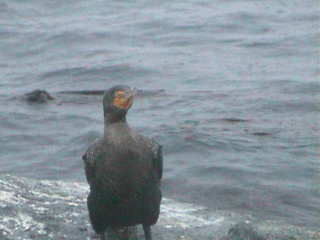 |
|
| 12b |
Predominantly black face |
13 |
| 13a |
Light-coloured throat patch, males with white ears – present in January |
| Brandts’ cormorant |
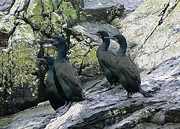 |
|
| 13b |
Snake-like neck, smallest of the cormorants |
| Pelagic cormorant |
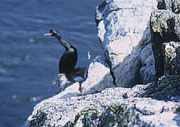 |
|
| 14a |
Black with white wing patches and red feet |
| Pigeon guillimot |
 |
|
| 14b |
Other shorebirds and landbirds and ducks/geese |
15. |
| 15a |
Shorebirds.and ducks/geese |
16 |
| 15b |
Land birds.. shorter bills |
21 |
| 16a |
Black with long red bill.. crow-sized |
| Black oyster-catcher |
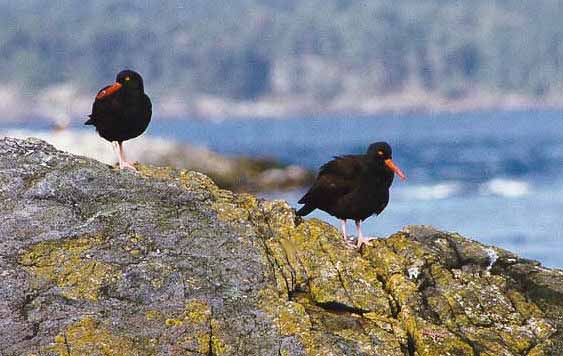 |
|
| 16b |
ducks or geese and other shorebirds |
17 |
| 17a |
Small shorebird, often seen in winter near the fresh water pools. White breast, uppers mottled.black and white pattern in flight |
| Black turnstone |
 |
|
| 17b |
Duck or goose or land birds |
18 |
| 18a |
Small colourful duck..swimming in kelp beds or perched very near shore |
| Harlequin Duck |
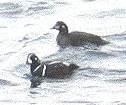 |
|
| 18b |
Geese and other birds |
19 |
| 19a |
Geese |
20 |
| 19b |
Other birds |
21 |
| 20a |
Large Goose, Black neck with white throat. Nests in April |
| Canada Goose |
 |
|
| 20b |
Half the size of the Canada goose, only rarely appears. white neck-ring and black chest. |
| Black Brant Goose |
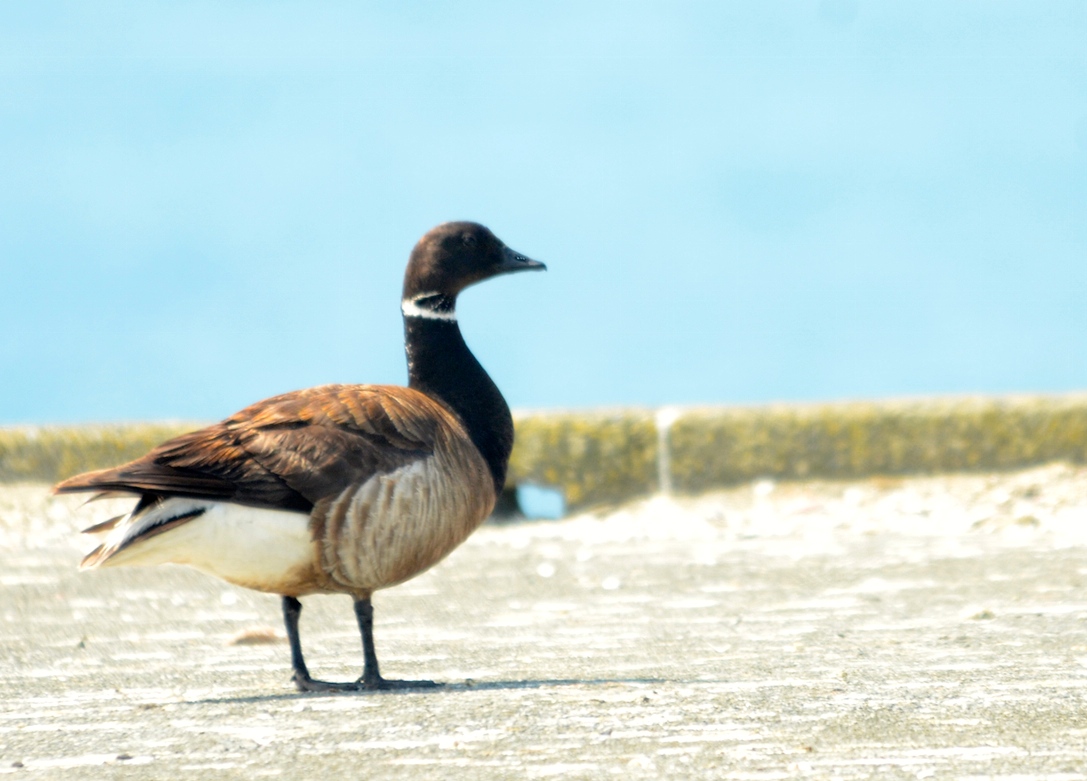 |
|
| 21a |
Black- Crow-like bird |
22 |
| 21b |
Other birds,and songbirds |
24 |
| 22a |
Large black bird with thick bill. They are as large as Glaucous-winged gulls |
| Raven |
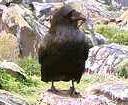 |
|
| 22b |
Medium sized black bird smaller than Glaucous winged gulls. |
go to 23 |
| 23a |
Large black bird , the bill is finer than a raven’s |
| North-western Crow |
 |
|
| 23b |
Small balckish bird, speckled with color |
European
Starling |
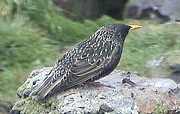 |
|
| 24a |
Very Large brown and white bird with a long bill equipped with a pouch |
Brown
Pelican |
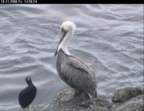 |
|
| 24b |
Other shorebirds |
go to 25 |
| 25a |
Long legged, and long necked bird… heron -like |
Great Blue
Heron |
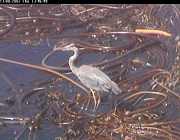 |
|
| 25b |
Other shorebirds |
go to 26 |
| 26 |
Brown shorebird with long bill curved downward. Brown eye- line. |
| Whimbrel |
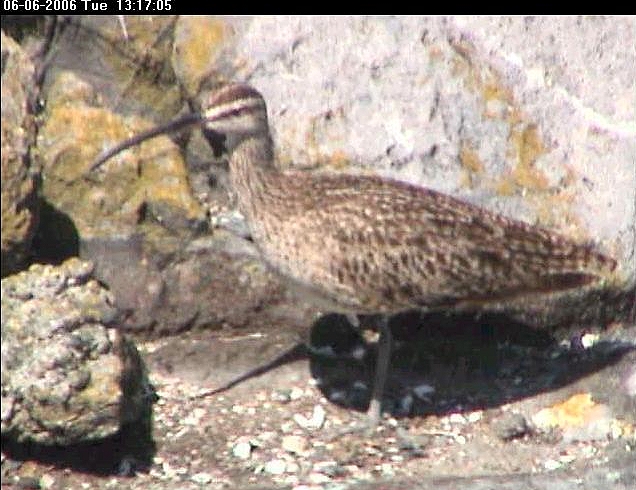 |
|
